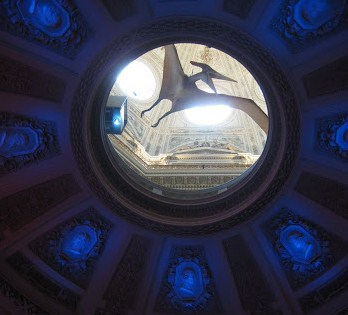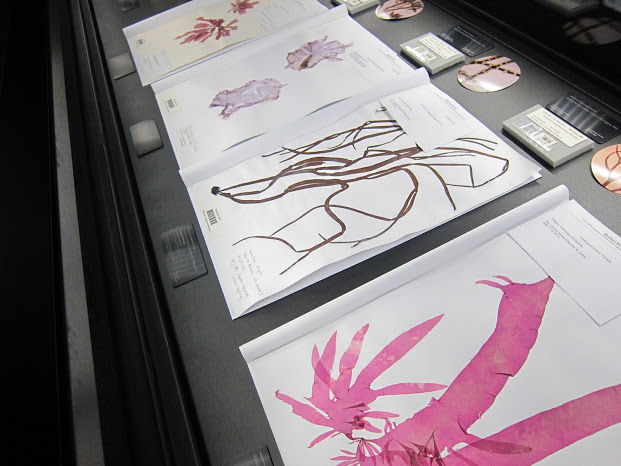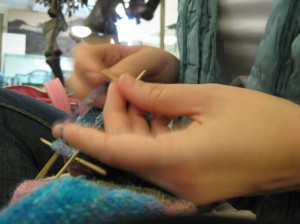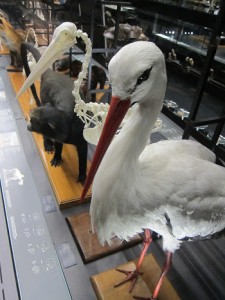 I go to a lot of natural history museums. Something about all those pretty rocks and dead animals, and the chance that I might see something I’ve never seen before or learn something new—I can’t resist it. In the last three years, I’ve been to at least 15 natural history museums on two continents. Here’s some of the stuff I’ve learned.
I go to a lot of natural history museums. Something about all those pretty rocks and dead animals, and the chance that I might see something I’ve never seen before or learn something new—I can’t resist it. In the last three years, I’ve been to at least 15 natural history museums on two continents. Here’s some of the stuff I’ve learned.
1. Don’t try to see everything. At the American Museum of Natural History in New York, it’s really easy to get overloaded. There’s just a lot of stuff. On a visit in 2010 I started, for some reason, with the minerals. They’re in this weird space, full of dark side galleries and carpeted stairs. I looked at as many as I could stand, then sat for a while in a dark corner.
 But I’d made the #1 rookie museum mistake. If you try to look at everything, your brain will fill up on the first stuff you come to and you’ll spend the rest of the time staring vacantly at fantastic objects, trying to will yourself to care and justify the 20 bucks you spent to get in. (This is why free museums are so awesome.) I never get anything out of looking at minerals except a full brain and a vague sense that rocks are pretty.
But I’d made the #1 rookie museum mistake. If you try to look at everything, your brain will fill up on the first stuff you come to and you’ll spend the rest of the time staring vacantly at fantastic objects, trying to will yourself to care and justify the 20 bucks you spent to get in. (This is why free museums are so awesome.) I never get anything out of looking at minerals except a full brain and a vague sense that rocks are pretty.
I spent the rest of the day trying to get myself to pay attention to the dinosaurs. I headed upstairs, looked at some Triceratops heads, then got distracted by the mammal skeletons and got interested in a display explaining why the classic view of horse evolution is too simplistic. I went back to the dinosaurs—the AMNH’s collection is famous—but my brain was done. Finally I parked myself on a bench under a sauropod, got out the sock I was knitting, and watched people go by.
 Here’s the right way: Take it at a walk. Wait for something to catch your eye. And take lots of breaks. Museums have crappy, overpriced cafes for a reason.
Here’s the right way: Take it at a walk. Wait for something to catch your eye. And take lots of breaks. Museums have crappy, overpriced cafes for a reason.
2. Take a friend who is as nerdy as you. I once spent a delightful morning in the museum at the Page Museum at the La Brea Tar Pits in Los Angeles with a friend who did her Ph.D. on evolution.
The tar pits are chock full of the dead remains of animals that roamed the Los Angeles area 50,000 to 11,000 years ago. There’s a sign at the ticket desk: “No dinosaurs were found at the Tar Pits.” Apparently people assume that all skeletons in museums are dinosaurs. These animals lived 65 million years after the dinosaurs stopped walking the Earth. Not only had humans evolved, we were starting to show up in North America.
All these giant sloths and mammoths and dire wolves have their bones hanging out for the world to see. It’s a dream of comparative anatomy – you can see right there how different animals have evolved to have their knees and ankles in different places. The Extinct Western Horse’s front legs have toes on the ground, the heel near its belly and elbow snuggled up to the shoulder. The California saber-tooth, on the other hand, has its toes and heel on the ground and the elbow in the middle of the limb, like us.
My friend and I spent ages looking at the different skeletons, talking about their shape and how they got that way. We were there for two and a half hours–and it’s a tiny museum.
 3. Find the old parts. Museums have learned a lot about how to get information across to visitors. Cases full of skeletons are giving way to educational exhibits about the scientific method and evolution. The Smithsonian’s National Museum of Natural History, here in D.C., closed its dusty old dioramas, re-taxidermied the skins, and opened a gorgeous mammal hall in 2003, where the animals leap and eat and fly in natural light against white backgrounds. It’s great to look at it, and it’s organized around teaching about evolutionary adaptations to environment.
3. Find the old parts. Museums have learned a lot about how to get information across to visitors. Cases full of skeletons are giving way to educational exhibits about the scientific method and evolution. The Smithsonian’s National Museum of Natural History, here in D.C., closed its dusty old dioramas, re-taxidermied the skins, and opened a gorgeous mammal hall in 2003, where the animals leap and eat and fly in natural light against white backgrounds. It’s great to look at it, and it’s organized around teaching about evolutionary adaptations to environment.
Remnants of the past hide in the corners of the big renovating natural history museums. The Natural History Museum in London has a flashy modern exhibit about geology and earthquakes, complete with a mockup of a Japanese supermarket that you can stand in while it shakes. But it also has a hall of dead birds in cases, including a creepy 19th-century case of hummingbirds, all killed and posed for maximum beauty in a wood-framed glass case.
 Then every now and then you come across a whole museum that hasn’t been renovated in a while. Before the National Museum in Prague closed for renovation in July 2011, you could wander room after gorgeous room of glass cases full of rows of minerals labeled only in Czech. I got more out of this than most boxes of minerals–at least my boyfriend and I were able to amuse ourselves trying to guess what they were. (Gold, in case you were wondering, is “zlato” and smithsonite is “smithsonit.”)
Then every now and then you come across a whole museum that hasn’t been renovated in a while. Before the National Museum in Prague closed for renovation in July 2011, you could wander room after gorgeous room of glass cases full of rows of minerals labeled only in Czech. I got more out of this than most boxes of minerals–at least my boyfriend and I were able to amuse ourselves trying to guess what they were. (Gold, in case you were wondering, is “zlato” and smithsonite is “smithsonit.”)
I am in favor of teaching visitors about the scientific method and evolution. But I also like museums that honor the impulse that led to their formation: embracing the world by shooting it, stuffing it, and putting it in your house. I’m glad we do less of that now, and I’m glad I still have a way to experience it.
__________
Helen Fields is a freelance writer in Washington, D.C. She used to have staff jobs at magazines, but has been working for herself since 2008. This blog post was written on an airplane, at her desk in D.C., and on the floor of a condo in Ontario.
She took all the photos herself. They are (except for the action knitting shot, taken under a sauropod in the American Museum of Natural History in New York) taken in museums in Vienna, Barcelona, Barcelona again, and Prague.
Enjoyed this post. Reminded me how much I love these museums. I was in the National Museum in Prague in 1990. It was beautiful. Somehow I started from a side or rear entrance and ended by coming out in the front on Wenceslas Square behind a speaker at a podium addressing a large crowd in the square for a civic rembrance day. I stealthily moved down the side steps. The odd thing was: the last section I had toured was military history. One of the last items I looked at was a very early photo of some individual in formal attire standing at the front of the museum, at the head of Wenceslas Square addressing the square filled with people. Double-take, for realz.
Wow, deja vu! I also spent a day entranced by the National Museum in Prague in 1989. In those days my local museum, in Melbourne, Australia, was also unrenovated, so I was quite used to not having all the detail removed. I hesitate to say ‘dumbed down’, since I can be just as susceptible to museum fatigue as anyone, but both the old Melbourne Museum and the old National Museum in Prague gave you a sense of continuity with the institution’s past that modern curation just doesn’t manage to evoke.
It’s so nice to hear from other people who loved the National Museum in Prague! I’m so curious what it will be like after the renovation. It’s supposed to reopen in 2015.